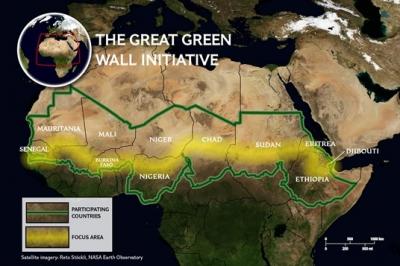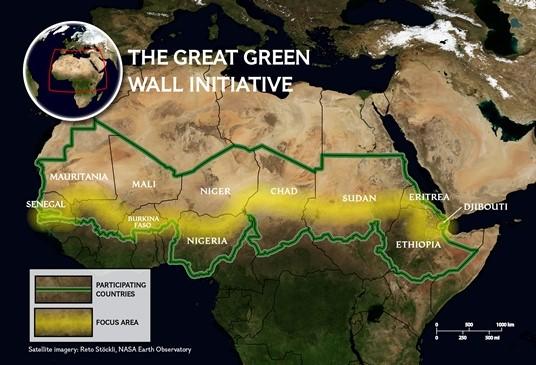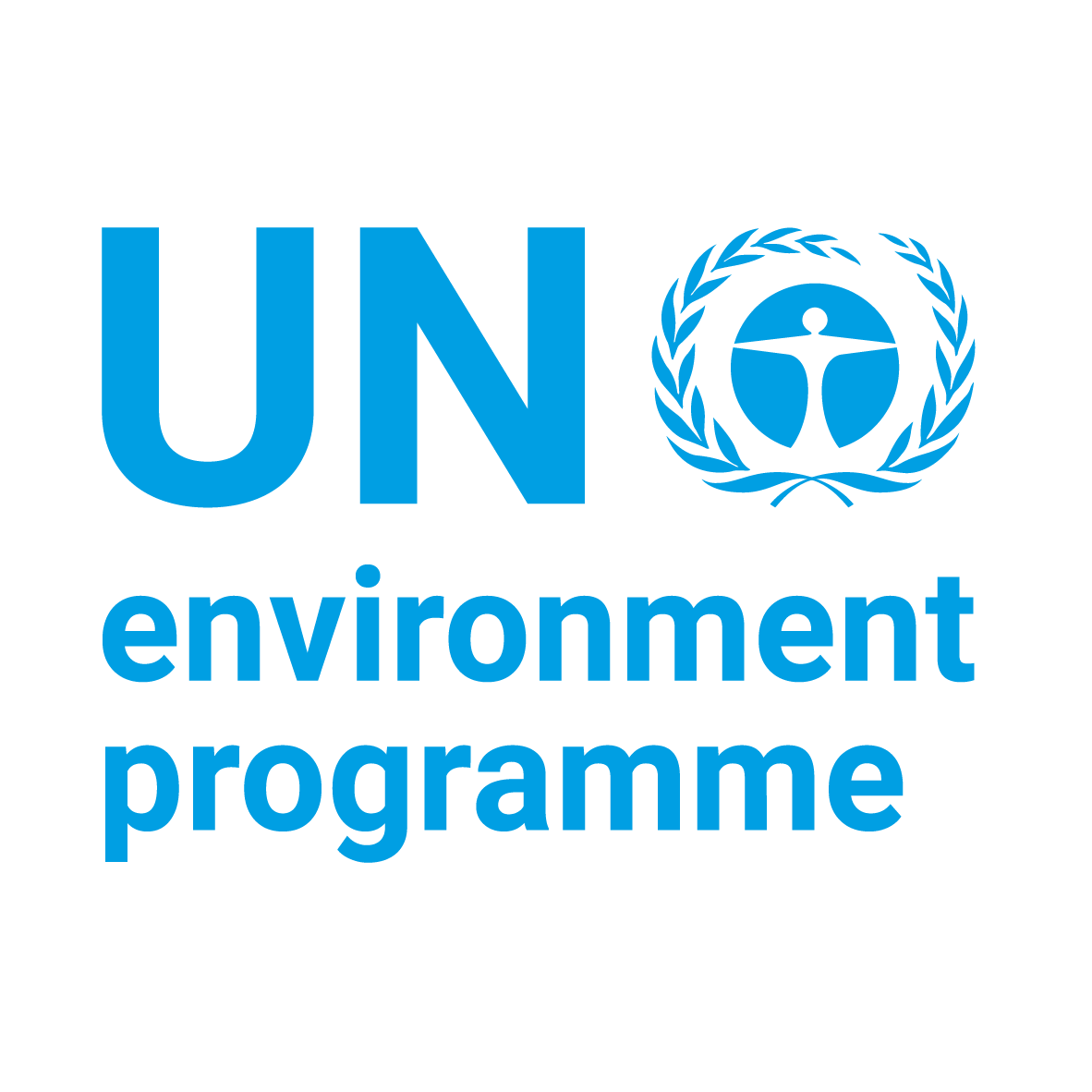 Adapted from NASA Earth Observatory satellite imagery
Adapted from NASA Earth Observatory satellite imageryThe objective of the Great Green Wall Initiative (GGWI) is to provide people living in drylands, including nomadic communities, with additional livelihoods while enhancing their food security. The original concept of the GGWI was to establish a physical barrier of trees from Dakar to Djibouti, focusing on a strip of land 15 km wide and 7,100 m long that includes Burkina Faso, Chad, Djibouti, Eritrea, Ethiopia, Mali, Mauritania, Niger, Nigeria, Senegal and Sudan. The purpose of this barrier is to slow the advancement of the desert and impede the hot winds that increase erosion, thereby improving the ecosystems of the Sahel. The concept has since evolved into a mosaic of interventions that consider sustainable livelihoods and the interests of the local populations. Each country addresses problems within its own local context, including inter alia: i) land degradation; ii) climate change adaptation and mitigation; iii) biodiversity; and iv) forestry. The GGWI is therefore a resilience programme with integrated actions that address challenges in sectors such as: i) natural resource management; ii) infrastructure; and iii) sustainability of rural production systems, including agriculture, breeding and forestry.
Key lessons
- Communities living in arid and semi-arid regions (hereafter “drylands”) have succeeded in increasing their incomes by innovating and experimenting with agricultural and natural resource management practices.
- Innovation by researchers, farmers and/or project staff have contributed significantly to the success of projects that focus on drylands. Some projects are successful because they implement adaptive management, thereby allowing initiatives to innovate.
- Increased land productivity and improved goods and services provided by restored drylands contributes to increased income forrural households








